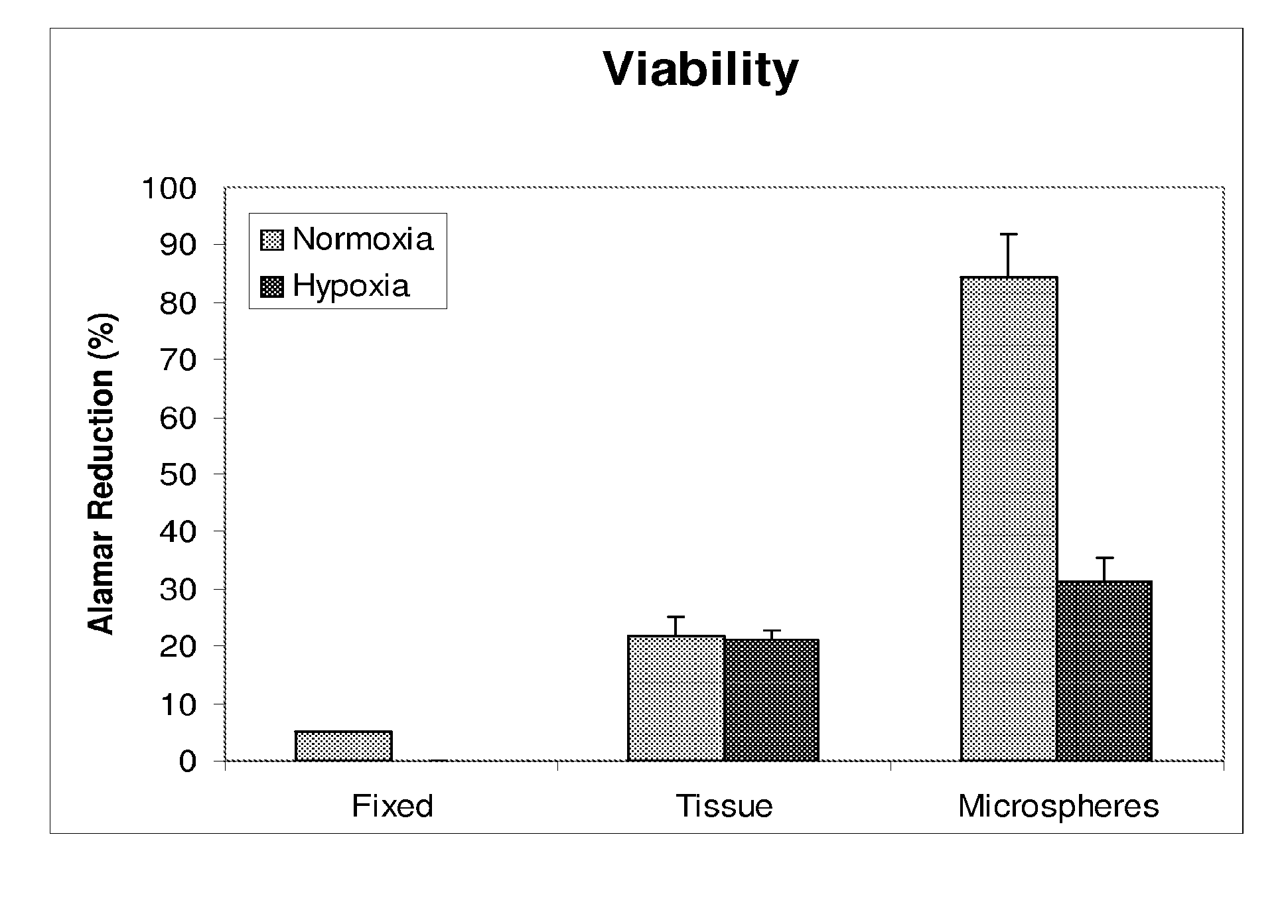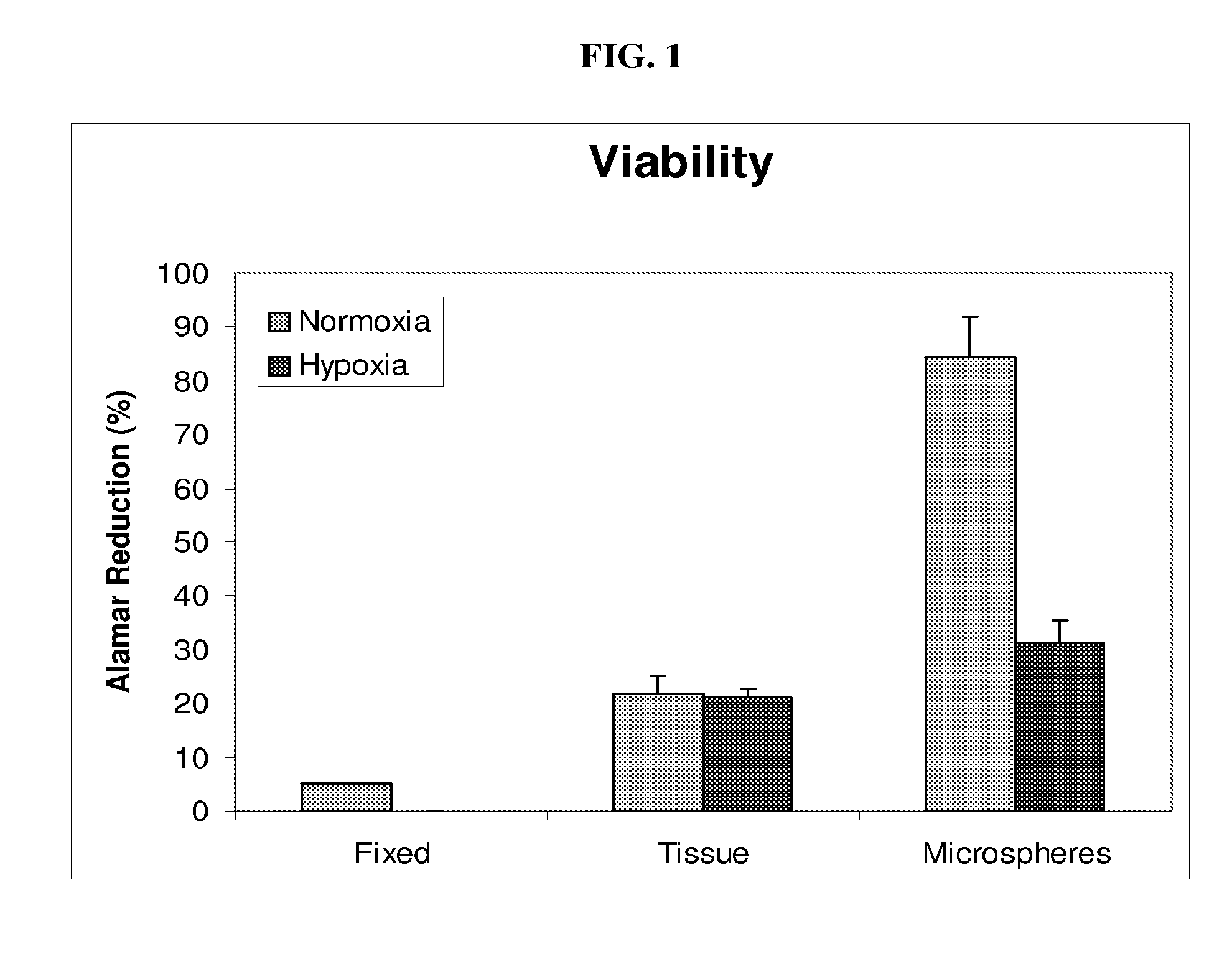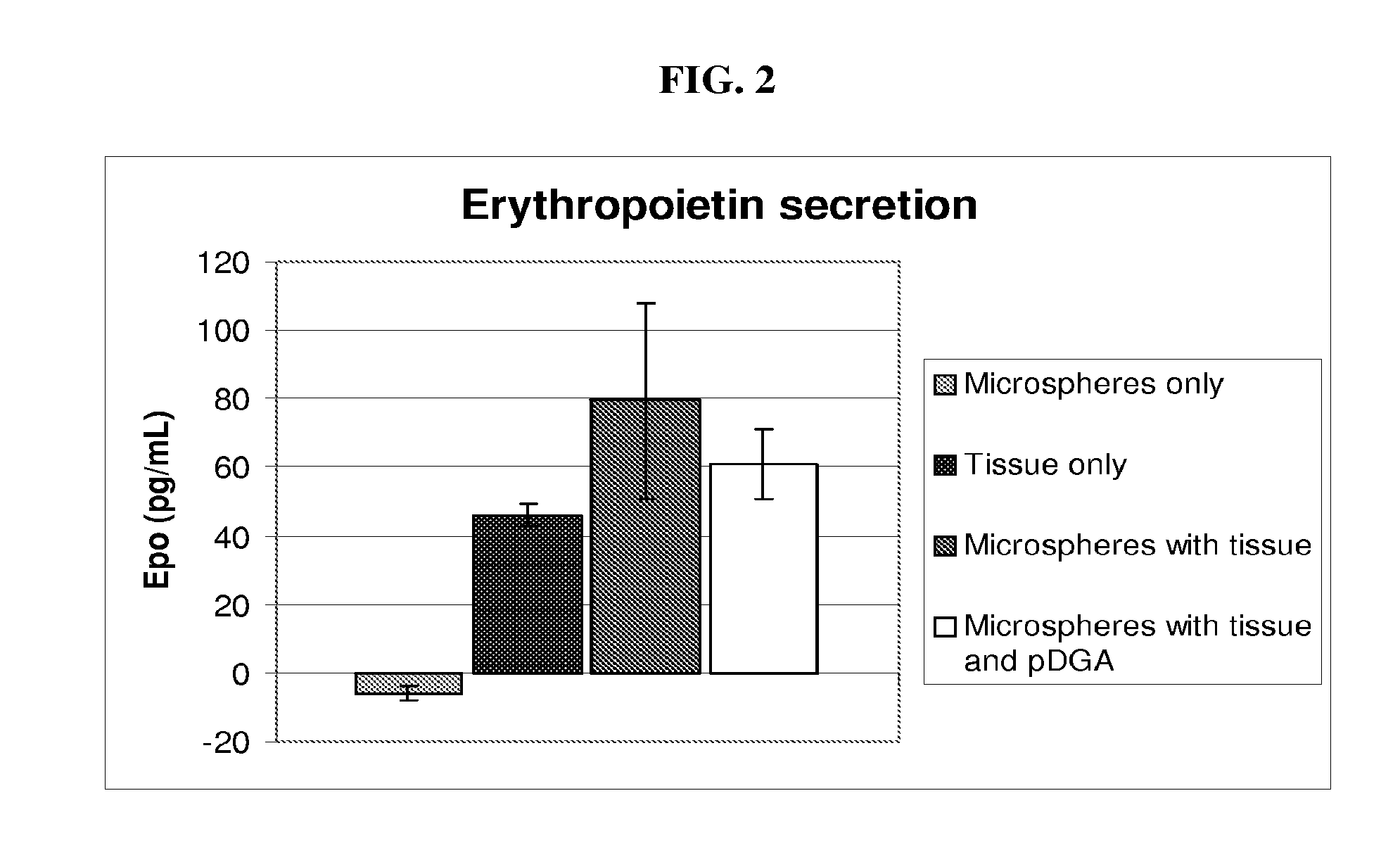Encapsulated kidney tissue
a tissue and encapsulation technology, applied in the field of tissue encapsulation, can solve the problems of cyclical fluctuations in blood epo and hematocrit values, patients not being able to comply and frequent, and encapsulation of proteins being associated with the diseas
- Summary
- Abstract
- Description
- Claims
- Application Information
AI Technical Summary
Problems solved by technology
Method used
Image
Examples
example 1
Formation of Therapeutic Implant
[0032]Four kidneys from female, Long Evans rats (eight weeks old) were surgically removed, rinsed in ice cold phosphate buffered saline without Ca2+ and Mg2+ (PBS) (Invitrogen, Carlsbad, Calif.) and then, using a scalpel, were minced into small pieces (1-5 mm3). A 300 uM-steel sieve (Sigma, St Louis, Mo.) was then used to further mince the tissue fragments. Minced tissue was then washed three times with 30-50 mL of Growth Medium containing Dulbecco's Modified Eagles Medium (DMEM) (Invitrogen) containing 1% penicillin / streptomycin (Invitrogen) and 1% fetal bovine serum (FBS) (Hyclone, Logan, Utah). The final wash was completely removed and the tissue fragments were loaded into one 1-milliliter syringe of a two syringe mixing system. A 1.8% (w / v) alginate solution (Sigma) was prepared in Growth Medium and was loaded into the second 1-milliliter syringe. The two solutions were then mixed together by pushing the contents back and forth through both syring...
example 2
Bead Diameter Measurements
[0034]Fourteen individual, tissue containing beads were placed into a clean tissue culture plate and imaged using a Nikon dissecting microscope fitted with a digital camera. The diameter of each bead was then measured using IMAGE PRO PLUS Software.
[0035]Visual examination of alginate encapsulated tissue beads showed that manual extrusion through the two-way syringe system was effective in generating spherical, tissue containing beads. Tissue fragments within the alginate beads were also visible, demonstrating a uniform distribution throughout the alginate gel. One-hundred and fifteen beads were generated from 3.72 g of fragmented kidney tissue resulting in approximately 32 mg of tissue per bead. Table 1 shows the distribution of bead diameter.
TABLE 1DiameterBead(mm)14.8424.2634.6644.1354.3764.1374.8384.5994.36104.42114.34125.90134.55144.51Average4.56Std0.44
The average diameter of fourteen individual beads was found to be 4.56+ / −0.44 mm.
example 3
Assessment of Cell Viability
[0036]Minced kidney tissue viability was assessed using ALAMAR BLUE (Invitrogen), a colorimetric REDOX indicator that is reduced in response to metabolic activity. After four days in culture, spent Growth Medium was removed from samples of non-encapsulated kidney tissue, encapsulated kidney tissue, isopropanol fixed kidney tissue and Growth Medium only. One milliliter of Growth Medium, containing 10% ALAMAR BLUE, was added to the samples and further incubated for 2-4 hours at 37° C., 5% CO2 with gentle rocking. Spent media was then analyzed spectrophotometrically (SPECTRAMAX-190, Molecular devices, Sunnyvale, Calif.) at 570 nm and 600 nm. Media from each sample was analyzed in triplicate. Percent reduction of ALAMAR BLUE was determined following the manufactures instructions and is an indirect measurement of cell viability.
[0037]After four days of culture, tissue viability was evaluated. As compared to non-encapsulated tissue, encapsulation maintained gre...
PUM
| Property | Measurement | Unit |
|---|---|---|
| size | aaaaa | aaaaa |
| size | aaaaa | aaaaa |
| diameter | aaaaa | aaaaa |
Abstract
Description
Claims
Application Information
 Login to View More
Login to View More - R&D
- Intellectual Property
- Life Sciences
- Materials
- Tech Scout
- Unparalleled Data Quality
- Higher Quality Content
- 60% Fewer Hallucinations
Browse by: Latest US Patents, China's latest patents, Technical Efficacy Thesaurus, Application Domain, Technology Topic, Popular Technical Reports.
© 2025 PatSnap. All rights reserved.Legal|Privacy policy|Modern Slavery Act Transparency Statement|Sitemap|About US| Contact US: help@patsnap.com



